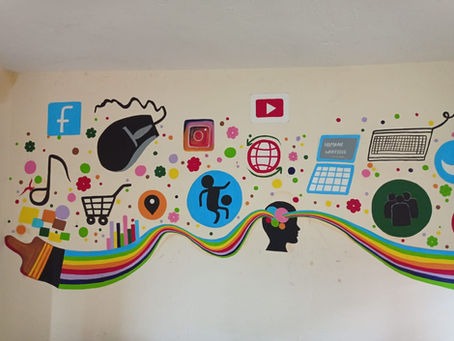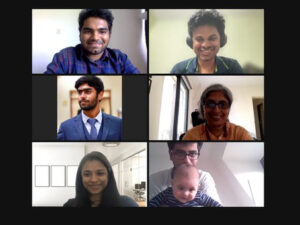
From the outbreak of the COVID-19 pandemic in the beginning of 2020, most dimensions of life in society have been challenged all around the world. The series of lockdowns and social distancing measures with which governments have tried to control the disease and prevent health-care systems from collapsing have not only impacted direct interactions and personal relationships, but have also had devastating effects for all the economies around the world.
One of the social foundations that has suffered intensively and resisted quietly during the corona crises – with serious consequences for children, families and communities – is the education system. It is important to remember that schooling, in particular for children from less privileged backgrounds, is much more than a place to acquire basic academic skills and competencies. It represents a promise of a better future, the access to higher education, more professional opportunities and upwards social mobility. In addition, alongside family, school is essential for adequate psychosocial development, as the relationships children develop with their peers and teachers shape their self-esteem and self-confidence as well as their social and intellectual capabilities.
In the current situation, many schools have had to either remain closed for long periods of time or adapt to the material and health constraints, which in many cases have limited considerably their ability to carry out their mission, putting extra pressure on parents, teachers and communities. When virtual teaching is the only choice, both access to technology and effective distance-learning methodologies are needed to ensure knowledge transmission, engagement and motivation, despite the limited social interaction.
While everybody agrees that the future of the youngest generations should not be compromised by the COVID-19 crisis, the striking question is how to guarantee the fundamental right to education everywhere and for all. In this respect, Humane Warriors sees access to technology and computer literacy as enablers and motivation boosters to ensure that all children can keep up. Therefore, more than ever, we are committed to promote e-learning and digital education, as we are doing in our project in Kanhewadi Budruk, a small village in Pune, where we are participating in the creation of the first rural e-learning centre in India.
Teachers share their views on the pandemic
In Switzerland, all primary schools were closed during the first wave of the pandemic in spring of 2020. Some months after, the management of quarantine measures for primary and secondary educational institutions was passed on to the cantonal authorities. In the case of Zurich, it was decided to keep schools open but under strict hygiene measures, which included the use of masks by the teaching staff, no physical contact, the reduction of the number of students per class and in some cases the introduction of distance teaching via Zoom, the popular online meeting platform. Franziska, who teaches in a small school for children with learning difficulties in the periphery of Zurich, commented that for those who work with very young children, who normally communicate through body language, restricting physical closeness is a real challenge. She finds it difficult to use gestures and facial expressions for non-verbal communication when wearing a mask. Like most parents, Franziska is glad that schools haven’t closed their doors again, since during the lockdown children spent countless hours in front of a screen, which is far from ideal for children. Although many parents are still working from home, they can feel a bit more relaxed as they don’t have to multitask with co-teaching their kids, as was the case in 2020.
Spain has been one of the countries worst hit by the pandemic of COVID-19. In spring 2020, the government imposed one of the most strict lockdowns in Europe, which also included the mobility and social contact restrictions for school children. With the school closures, online teaching became a must for several months, although schools reopened in September 2020 introducing a set of measures to keep the spread under control, such as smaller groups, compulsory masks and class bubbles.
The primary school teacher, Montserrat joined the multicultural school in her hometown Aranjuez, close to Madrid, at the beginning of this school year, just a few months after giving birth to her fourth child. She reports that during the lockdown, half of the pupils didn’t have the appropriate technological resources to follow virtual classes at home, such as personal computers or tablets, and often the only device available were mobile phones, which are not suitable for this purpose. In addition, some families and students didn’t have the knowledge and the preparation to use these devices daily and in the way proposed by the teachers. As she points out, this has underlined the socioeconomic differences between students, generating additionally an educational divide.
In many schools, teachers made an extraordinary effort to communicate with families and ensure that their students could follow the virtual lessons and homework proposed. The success varied, as some parents felt overwhelmed by the circumstances and were not able to help their children adequately. Being a tutor of a class of 8 year-old pupils, Montserrat has experienced how essential the family’s support is for every student, as no matter how much motivation children have to pursue their education, if the family doesn’t have their basic needs covered or lacks educational resources or interest, the pupil’s path won’t be easy.
Through her experience during the pandemic, she has learnt that schools need to work harder in the emotional support they provide to both families and pupils to make distance-learning possible during a crisis. In her view, it is necessary to prioritise social and emotional education over the acquisition of other skills.
Indian school children had also faced the dramatic consequences of the pandemic, as all education institutions have remained closed in many states since 17 March 2020. The uneven spread of digitalisation and the lack of the necessary resources to support distance learning jeopardised the access of many children and young people to education, particularly those from poorest households or living in rural areas. In addition, the serious economic difficulties and unemployment derived from the pandemic, as well as the safety concerns of many parents, have led to an increase in the number of school dropouts.
Most schools in the state of Pune reopened in January 2021, both in the city and in rural areas, which required their adherence to a strict COVID-19 protocol, including hygienic measures, thermal screening and social distancing. Milind, who teaches Maths and Science in a small rural school of the area, is glad to go back to offline classes but acknowledges the difficulties of implementing the compulsory security measures in schools with limited resources. The lack of available classrooms, the costs of sanitatising school benches and the not sufficiently rigorous compliance of the hand disinfection and masks usage protocols are among the concerns of this 37-year-old teacher. In his opinion, creating awareness and improving communication with the students and their communities is a necessary first step to improve the current situation at his school.
All around the world, schools have been affected by the global pandemic and students, teachers, families and communities have been challenged to manage the crisis in the best possible way, with varying degrees of support from the local authorities they depend on. Virtual lessons have revealed that education is much more than knowledge transmission and teachers are much more than learning facilitators. We can only hope that as schools reopen, we won’t forget these important facts and will continue emphasising the personal and emotional factors to provide our students and their environment with the solid foundations they need to develop beyond the courses they take.



